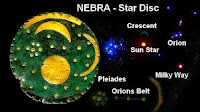This is a galaxy news blog. Everybody invited in my blog and please comments your important information about related blog.
Translate
Saturday, July 23, 2016
Curiosity rover is to choose rocks for study
Researchers provided
rover opportunity to choose their own targets for laser spectrometer.
Scientists gave more autonomy Curiosity NASA Researchers at NASA upgraded the
software of the rover Curiosity in such a way that it is now able to choose
their own breed for analysis. As reported on the site NASA ,
Sunday, June 5, 2016
Geo-IK-2 on the way to a working orbit
MSK warhead
launcher "Rokot" with the Russian geodesic satellite Geo-IK-2 on
board separated from the second stage and brought a satellite into an
intermediate orbit. Start was done six minutes earlier from Plesetsk
Arkhangelsk region . "Rokot" were created as part of the conversion
program is removed from the weapons of intercontinental ballistic missile
RS-18. Earlier start "Rokot" with Geo-IK-2 on board postponed either
due to technical reasons or organizational (now cannot tell). Launch of the
satellite is planned for May. The device is vegetating at the launch site from
the end of March.
BEAM. Start of two-year studies
On Monday, June 6, the
astronaut Jeffrey Williams enters the first experimental inflatable habitable
ISS module BEAM designed to test a new class of residential units planned to be used
for the study of long-distance lines (!) Of space for commercial use in low-Earth
orbits. May 28 in Saturday, for seven hours filled with air inflatable pilot
residential module manufactured by Bigelow Aerospace (BEAM).
Thursday, May 19, 2016
The dwarf planet Makemake has a moon
 A team of astronomers
has discovered a faint moon orbiting the dwarf planet Makemake; one of the five
dwarf planets in the Solar System. The object, which takes its name from the
Rapanui god of creation, Make-Make, it was discovered in 2005 and is a frozen
1,400 kilometers in diameter that orbits the Sun at a distance greater than
Pluto's body.
A team of astronomers
has discovered a faint moon orbiting the dwarf planet Makemake; one of the five
dwarf planets in the Solar System. The object, which takes its name from the
Rapanui god of creation, Make-Make, it was discovered in 2005 and is a frozen
1,400 kilometers in diameter that orbits the Sun at a distance greater than
Pluto's body.
Subscribe to:
Posts (Atom)
-
According to astrophysicists, the Earth is forthcoming cloud of unknown origin, which deletes everything in its path. It came from a bla...
-
United Launch Alliance Company successfully conducted the launch of a rocket Delta IV , which brought with it the WGS-9 satellite for mi...
-
NASA astronaut Ricky Arnold, who is currently on the International Space Station , posted a Bangkok snapshot from space on his Twitter ...
-
Previous May Cassini completed the first overview of Methoni (or Methone ), a small moon of Saturn, and exposed that the moon's sur...








